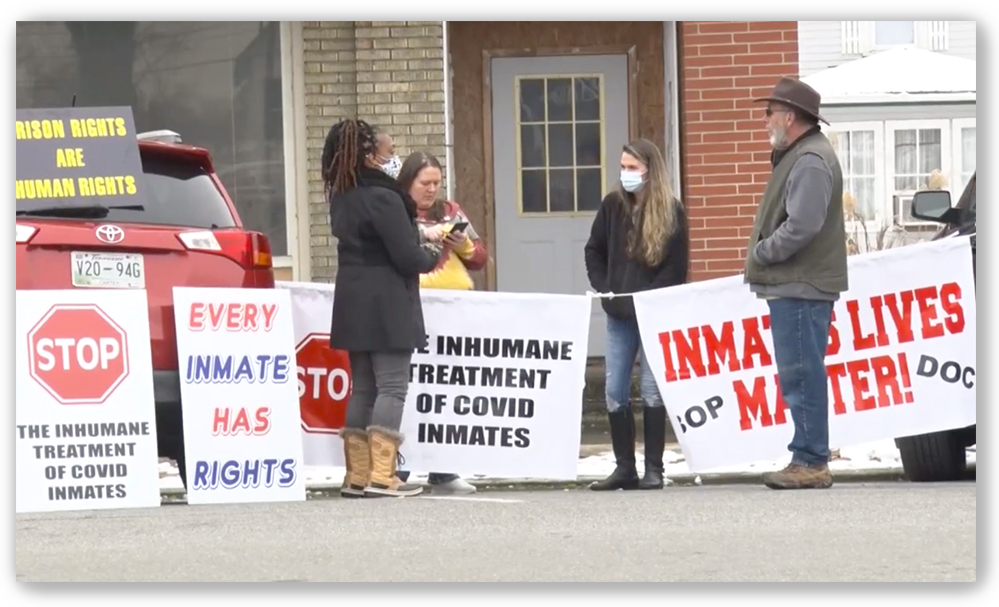We post news and comment on federal criminal justice issues, focused primarily on trial and post-conviction matters, legislative initiatives, and sentencing issues.

CARES ACT END NEARER THAN WE THOUGHT
Under Congressional pressure, in late January, President Joe Biden announced he would end the national COVID emergency on May 11th. Last week, the Senate made it clear to Biden that the emergency will end when Congress – not Joe – says it does.
 In February, the House voted 229-197 to terminate the COVID-19 pandemic national emergency order immediately. Last week, the Senate agreed by a 68-23 vote that the emergency, which Biden extended in January, should end.
In February, the House voted 229-197 to terminate the COVID-19 pandemic national emergency order immediately. Last week, the Senate agreed by a 68-23 vote that the emergency, which Biden extended in January, should end.
An Administration spokesman told Roll Call that “the President strongly opposes H.J. Res. 7, and the administration is planning to wind down the COVID national emergency and public health emergency on May 11….” However, “if this bill comes to [Biden’s] desk… he will sign it.”
Had the emergency expired on May 11, the Bureau of Prisons’ CARES Act authority to place prisoners in home confinement would have ended 30 days later, or on June 10. But with the emergency to expire as soon as today, BOP home confinement authority could end as early as Wednesday, May 3.
BOP CARES Act authority lasts during the “covered emergency period,” which the Act defines as “the period beginning on the date on which the President declared a national emergency under the National Emergencies Act… and ending on the date that is 30 days after the date on which the national emergency declaration terminates.”
The BOP previously promised not to slow CARES Act home confinement placement as the covered emergency period expired. However, there seems to be a marked increase in unexplained denials by Regional Residential Managers, many apparently resulting from the BOP’s current policy of soliciting the opinion of the same US Attorney responsible for convicting the prisoner to begin with.
 Writing in Forbes, Walter Pavlo said a prisoner told him that the BOP “is responding to inmates completely contrary to how they’ve responded to you.” Pavlo notes that “for all of the CARES Act successes, a review of the program, which will ultimately occur, will assess the equity with which the BOP used its authority. Many prisoners who were approved for CARES Act have told me that they received a denial but no real explanation for that denial. Others, with the support of a case manager and warden, were denied by Central Office, most likely from interference from prosecutors who have a renewed interest in keeping prisoners in institutions for as long as possible.”
Writing in Forbes, Walter Pavlo said a prisoner told him that the BOP “is responding to inmates completely contrary to how they’ve responded to you.” Pavlo notes that “for all of the CARES Act successes, a review of the program, which will ultimately occur, will assess the equity with which the BOP used its authority. Many prisoners who were approved for CARES Act have told me that they received a denial but no real explanation for that denial. Others, with the support of a case manager and warden, were denied by Central Office, most likely from interference from prosecutors who have a renewed interest in keeping prisoners in institutions for as long as possible.”
The time for a post-mortem will come soon enough, perhaps as soon as 30 days from now. For now, Congress has succeeded in advancing the timetable by maybe 40 days.
The New Testament quotes Jesus as telling Judas, “What thou doest, do quickly.” Good advice for anyone still in the CARES Act pipeline.
Roll Call, Senate votes to overturn COVID-19 national emergency order (March 29, 2023)
The Hill, Biden declines to veto GOP-led measure to end COVID-19 emergency March 29, 2023)
Forbes, End Of CARES Act Home Confinement Is Near For Many Federal Prisoners (March 29, 2023)
– Thomas L. Root























